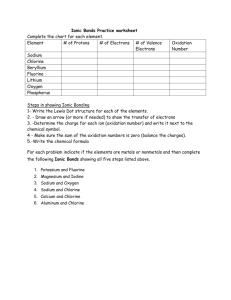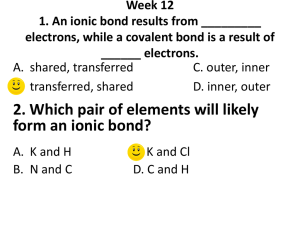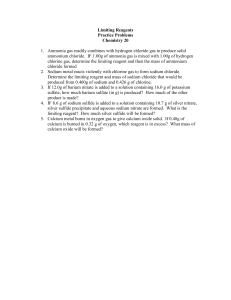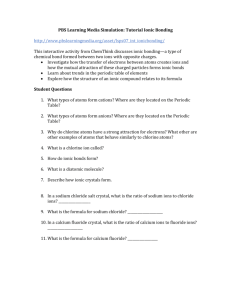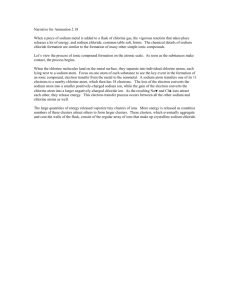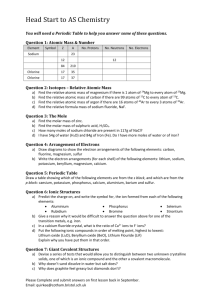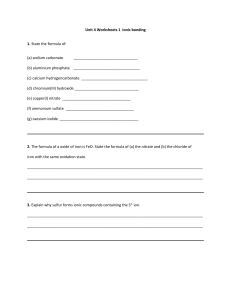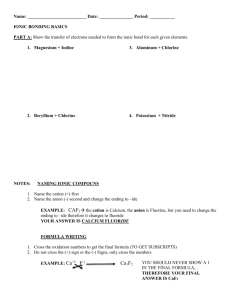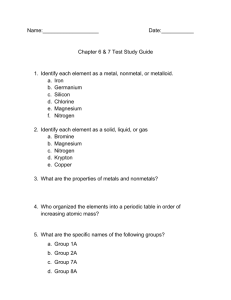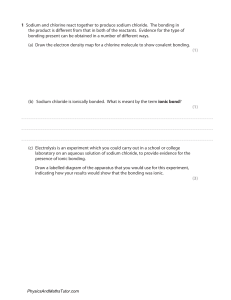Fall 2015 Semester Exam Review
advertisement
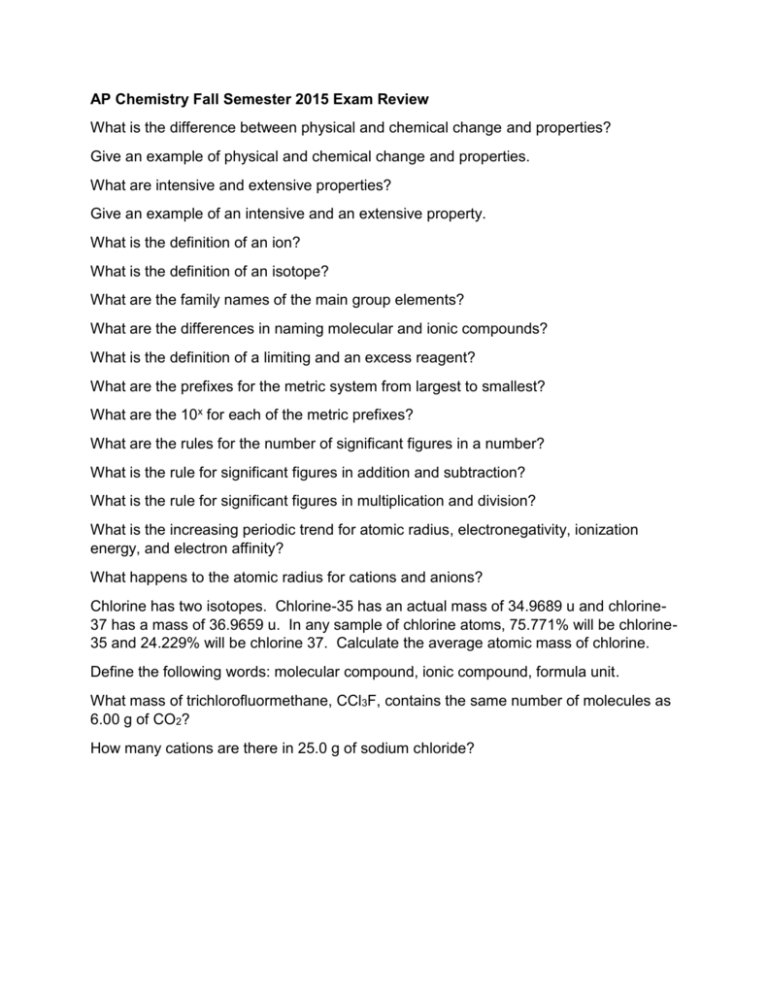
AP Chemistry Fall Semester 2015 Exam Review What is the difference between physical and chemical change and properties? Give an example of physical and chemical change and properties. What are intensive and extensive properties? Give an example of an intensive and an extensive property. What is the definition of an ion? What is the definition of an isotope? What are the family names of the main group elements? What are the differences in naming molecular and ionic compounds? What is the definition of a limiting and an excess reagent? What are the prefixes for the metric system from largest to smallest? What are the 10x for each of the metric prefixes? What are the rules for the number of significant figures in a number? What is the rule for significant figures in addition and subtraction? What is the rule for significant figures in multiplication and division? What is the increasing periodic trend for atomic radius, electronegativity, ionization energy, and electron affinity? What happens to the atomic radius for cations and anions? Chlorine has two isotopes. Chlorine-35 has an actual mass of 34.9689 u and chlorine37 has a mass of 36.9659 u. In any sample of chlorine atoms, 75.771% will be chlorine35 and 24.229% will be chlorine 37. Calculate the average atomic mass of chlorine. Define the following words: molecular compound, ionic compound, formula unit. What mass of trichlorofluormethane, CCl3F, contains the same number of molecules as 6.00 g of CO2? How many cations are there in 25.0 g of sodium chloride? 250.0 g of gasoline reacts with 300.0 g of oxygen gas in your car’s engine. 2 C8H18 (g) + 25 O2 (g) → 16 CO2 (g) + 18 H2O (g) 1) What is the limiting reagent? What is the excess reagent? 2) What volume of CO2 is produced? 3) A student collects 129.0 g H2O. What is the % yield? What is a net ionic equation? Write balanced and complete ionic and net ionic equations for each reaction (if it occurs) 1) Potassium sulfate and Calcium iodide 2) Ammonium chloride and Sodium hydroxide 3) Silver nitrate and Sodium chloride What are the components of a combustion reaction? What are the gas laws? Draw a graph and the formulas for each. What is STP? What are all of your conversion factors for the gas laws? What is the mass percent of hydrogen in H2(SO4)? What is the Law of Conservation of Energy? What is the Law of Conservation of Mass?
